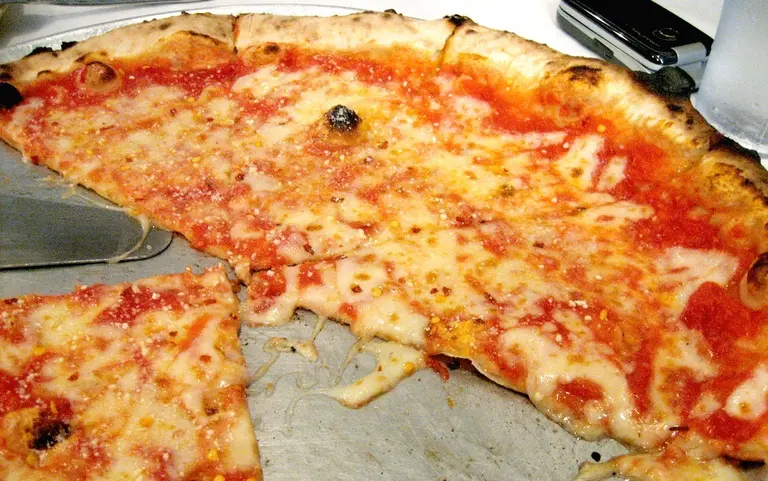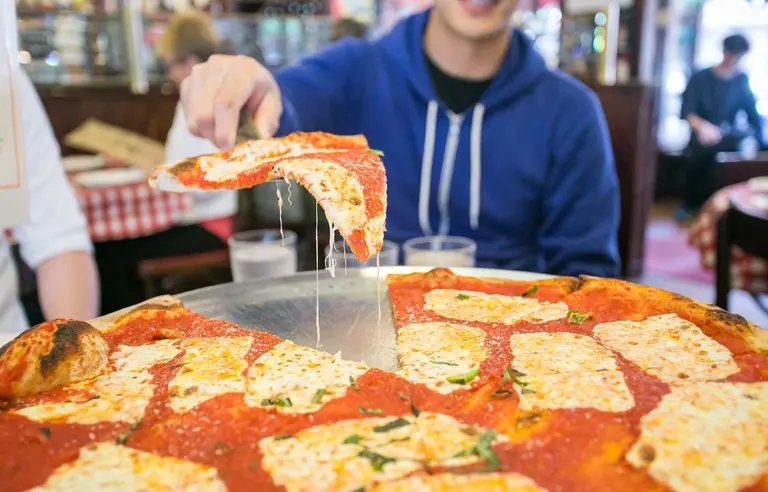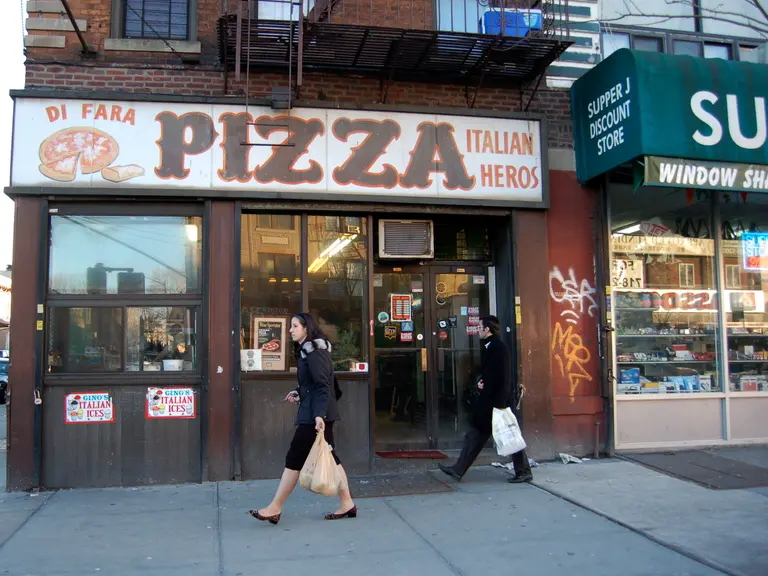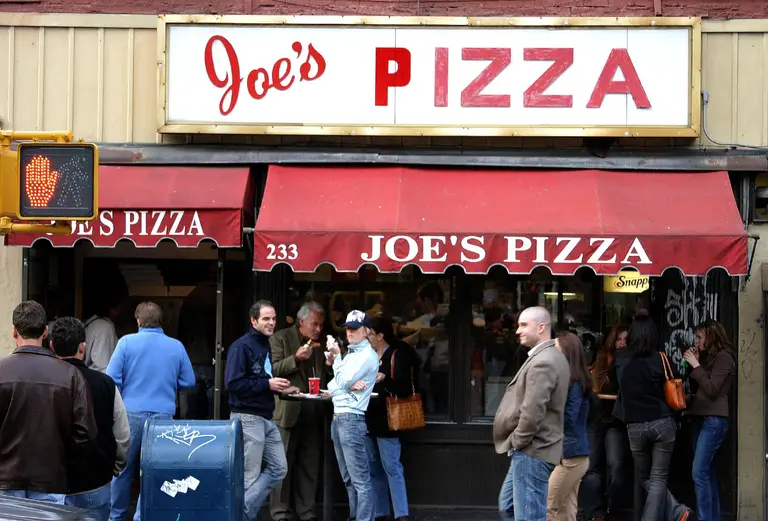April 3, 2019
How do you heighten something as ubiquitous in New York City as a slice of pizza? It’s all about the dough. Noam Grossman, the founder of Upside Pizza, which opened in the Garment District in January, uses a 100 percent naturally leavened dough with a sourdough starter, unbleached flour, and a rise time of 72 hours. Grossman credits this mixture, along with the use of a brick-lined oven and in-house ingredients, for making Upside Pizza stand out among the hundreds of other slice joints found across the city. With a team consisting of dollar-slice gurus Eli and Oren Halai, of 2 Bros. Pizza, and pizza consultant Anthony Falco, of Roberta’s fame, Grossman’s pizzeria elevates the New York slice experience while retaining its grab-and-go roots.
“We’re not cranking out quick-made pies,” Grossman told 6sqft. “We’re working tirelessly to make our pies memorable, and the absolute best they can be.” And all of this is happening in a 330-square-foot joint on the busy corner of 39th Street, across from the Port Authority. Boasting a colorful, in-your-face aesthetic, the inspiration for Upside Pizza's design came from "the nostalgia of being a kid in the '90s when hip hop and sports reigned supreme, and local pizza parlors were places of community gathering," he said. Ahead, hear from Grossman on Upside Pizza's plan to perfect the slice, the pizzeria's expansion, and his favorite slice joint in the city.
Meet Noam





